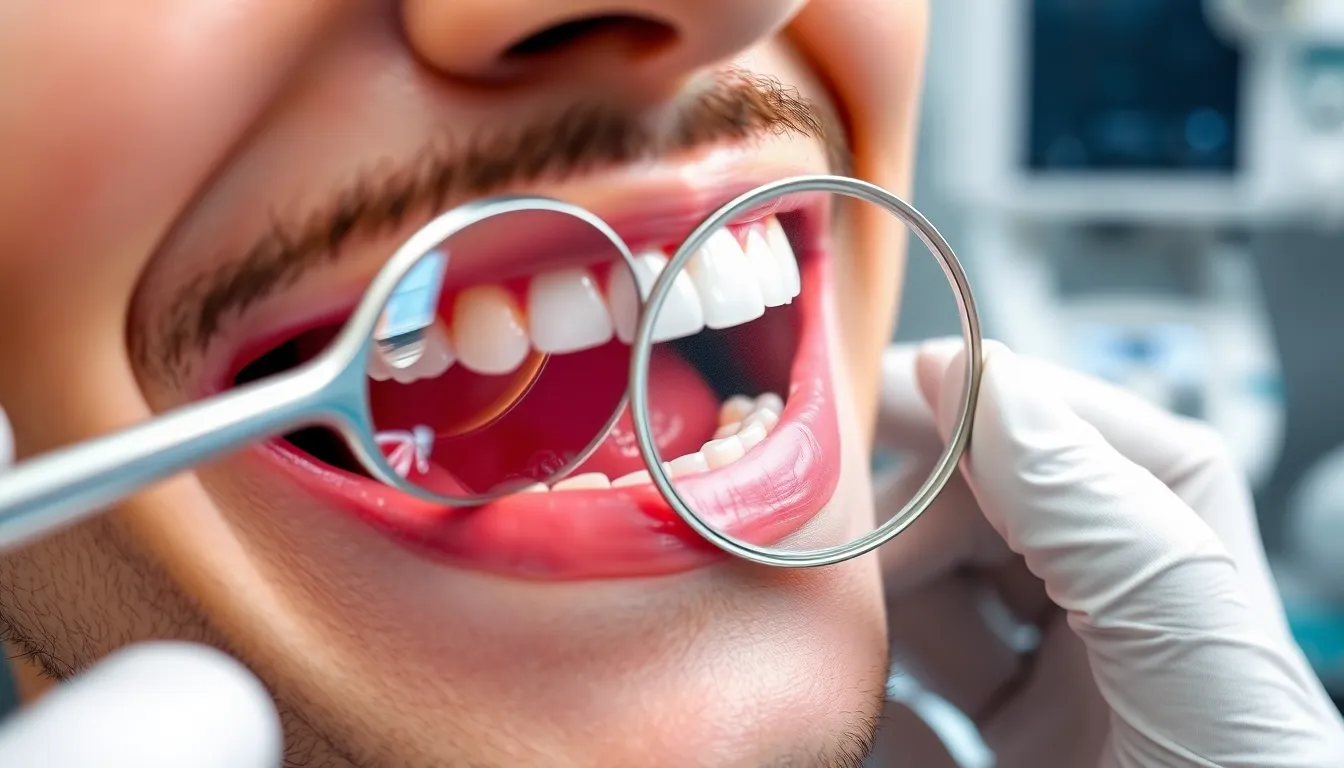Have you ever wondered if cavities can actually heal? Cavity remineralization offers a promising solution for early-stage tooth decay, potentially helping you avoid the drill altogether.
When caught early, demineralized enamel can often be repaired through proper remineralization techniques. The remarkable “before and after” results speak volumes—areas that once appeared chalky white or slightly discolored can transform back to healthy, strong enamel. This natural healing process requires the right balance of minerals, fluoride, and good oral hygiene practices to restore your tooth’s protective surface.
You’ll be amazed by the visible differences in pre-cavity lesions after consistent remineralization efforts. Let’s explore how this process works and what results you can realistically expect when trying to heal your teeth naturally.
Understanding Cavity Formation and Demineralization
Cavity formation begins long before you notice any pain or visible holes in your teeth. The process starts at a microscopic level with demineralization, where minerals are gradually lost from the tooth enamel due to acid attacks.
The Science Behind Tooth Decay
Tooth decay occurs when bacteria in your mouth convert sugars into acids that dissolve the minerals in your tooth enamel. These acids lower the pH level in your mouth to below 5.5, creating an environment where calcium and phosphate ions are pulled out of the enamel crystal structure. Bacteria form a sticky film called plaque that clings to teeth, producing acids continuously after each meal or snack. Over time, this repeated acid exposure weakens the enamel’s structure, creating white spots known as lesions—the first visible sign of demineralization.
Dr. Todd B. Harris often explains to patients, “Think of your enamel as a mineral bank. Every acid attack makes a withdrawal, and remineralization makes deposits. Problems arise when you’re making more withdrawals than deposits.”
Risk Factors for Enamel Demineralization
Poor oral hygiene stands as the primary risk factor for enamel demineralization, allowing plaque to build up and produce harmful acids. High sugar consumption provides fuel for acid-producing bacteria, with frequent snacking creating constant acid attacks without recovery time. Dry mouth sufferers face increased risk due to reduced saliva, which normally helps neutralize acids and supply minerals to teeth.
Medical conditions like acid reflux or bulimia expose teeth to stomach acids, rapidly accelerating enamel erosion. Certain medications can reduce saliva flow or contain sugar, contributing to demineralization. Genetic factors also play a role, as some people naturally have thinner or softer enamel that’s more vulnerable to acid damage.
What Is Cavity Remineralization?

Cavity remineralization is the natural repair process where minerals like calcium, phosphate, and fluoride are redeposited into areas of tooth enamel that have lost minerals due to acid attack. This process effectively reverses early stages of tooth decay before cavities fully form, restoring the strength and integrity of your enamel by rebuilding the hydroxyapatite crystals that make up your teeth.
Natural Remineralization Process
Your mouth constantly balances between demineralization and remineralization throughout each day. When you consume fermentable sugars, bacteria in your mouth produce acids that lower the pH below 5.5, causing minerals to dissolve from your enamel. Saliva plays a crucial role by buffering these acids and providing calcium and phosphate ions that can redeposit into the weakened enamel areas. Fluoride from toothpaste or fluoridated water enhances this process by creating fluorapatite, a mineral that’s more resistant to acid attacks than your natural enamel. Dr. Harris often tells patients, “Think of remineralization as nature’s way of healing your teeth—it’s happening right now as we speak, even without you realizing it.”
Clinical Assessment of Demineralized Areas
Dentists identify early enamel lesions using several diagnostic methods to determine if remineralization is possible. Visual inspection can reveal white spot lesions, the first visible sign of demineralization before cavitation occurs. Dental probes, radiographs, and advanced imaging techniques help assess the extent of mineral loss and determine appropriate treatment approaches. One patient, Sarah, came to our office concerned about white patches on her front teeth—through careful assessment, we determined these were early demineralization areas that could be completely reversed with targeted remineralization therapy rather than drilling. Early detection allows your dentist to intervene with fluoride treatments, recommend specialized remineralizing agents, and suggest improvements to your oral hygiene routine and diet that promote natural repair before permanent damage occurs.
Before Remineralization: Identifying Early Cavity Development

Early cavity detection is crucial for successful remineralization treatment. Catching decay in its initial stages allows for non-invasive interventions that can restore tooth structure naturally without drilling or fillings.
Visual Appearance of Pre-Cavitated Lesions
Pre-cavitated lesions appear as chalky white spots on tooth surfaces, indicating the beginning stages of enamel demineralization. These white spot lesions maintain an intact surface with no visible holes or cavitation, though the underlying enamel has become porous and weakened. The opaque appearance contrasts with surrounding healthy enamel, making these early decay sites noticeable during thorough examination. Dr. Todd B. Harris often tells patients, “These white spots are like warning flags your teeth are raising, signaling that mineral loss has begun but hasn’t yet created irreversible damage.”
Texture changes also accompany these visual signs, with affected areas feeling slightly rougher when gently probed. Many patients, like Jennifer, a 32-year-old patient at our practice, don’t realize these white patches aren’t simply cosmetic issues but rather the first visible evidence of the demineralization process. “I thought the white spots near my gumline were just stains from coffee,” Jennifer explained during her appointment. “I had no idea they were actually early cavities that could be reversed.”
Diagnostic Tools for Early Detection
Modern dentistry employs several sophisticated techniques to identify early cavity development before it progresses to full cavitation. Visual examination remains fundamental, with dentists meticulously inspecting clean, dry teeth under proper lighting to spot those characteristic white lesions. Gentle tactile assessment with specialized instruments helps determine if enamel has softened in suspicious areas.
Digital bitewing X-rays provide valuable insights into enamel density changes not visible to the naked eye. These radiographs can reveal demineralization beneath the surface while the outer enamel still appears intact. Laser fluorescence devices such as DIAGNOdent enhance diagnostic precision by measuring fluorescence differences between healthy and demineralized tooth structure, providing numerical readings that quantify mineral loss.
Quantitative Light-induced Fluorescence (QLF) technology offers another advanced method for early detection. This imaging technique uses exact light wavelengths to visualize mineral loss patterns and track changes over time. Dr. Harris has implemented this technology in his practice, noting: “QLF allows us to monitor remineralization progress with incredible precision, showing patients concrete evidence of improvement as their enamel regains minerals.”
Intraoral cameras with magnification capabilities enable both dentists and patients to see these early lesions on screen, improving understanding and treatment compliance. Early detection through these methods creates a critical window of opportunity where remineralization therapies can effectively reverse the decay process without resorting to invasive procedures.
Remineralization Methods and Treatments

Remineralization therapies offer a non-invasive approach to halt or reverse early cavity progression by improving mineral uptake in tooth structure. These treatments serve as effective alternatives to traditional drilling and filling for lesions that haven’t yet formed actual cavitations, focusing on rebuilding tooth enamel through targeted mineral delivery.
Fluoride Treatments and Applications
Fluoride remains the gold standard in cavity remineralization due to its multifaceted protective actions. When applied to teeth, fluoride incorporates into enamel apatite crystals to form fluorohydroxyapatite—a structure significantly more resistant to acid attacks than natural hydroxyapatite. This enhanced crystal structure facilitates the incorporation of calcium and phosphate ions into demineralized areas, effectively rebuilding weakened enamel.
Your dentist might recommend various fluoride delivery methods, including professional in-office treatments like varnishes and gels, or at-home products such as toothpastes and mouthrinses. After brushing with fluoride toothpaste, elevated fluoride levels remain bioavailable in your mouth for up to 30 minutes, continuously supporting remineralization.
Dr. Todd B. Harris explains, “Many patients don’t realize that fluoride doesn’t just prevent cavities—it actively fights bacterial activity in the mouth. At low concentrations, it inhibits harmful bacteria, while at higher concentrations found in professional treatments, it can actually eliminate these cavity-causing organisms.”
Calcium Phosphate Technologies
Calcium phosphate products deliver essential mineral ions directly to demineralized areas of your teeth, complementing fluoride’s remineralizing effects. These technologies supply the building blocks your enamel needs for repair—calcium and phosphate—in forms that can penetrate subsurface lesions without blocking further mineral deposition.
Products containing amorphous calcium phosphate or casein phosphopeptide-amorphous calcium phosphate (CPP-ACP) stabilize these minerals in a form your teeth can readily use. Sarah, a patient with recurring white spot lesions even though good oral hygiene, saw remarkable improvement after adding a calcium phosphate paste to her nightly routine. “After eight weeks of consistent use, the chalky spots had noticeably diminished, and my teeth felt smoother,” she reported at her follow-up appointment.
Bioactive Glass Products
Bioactive glass represents an innovative frontier in remineralization technology, offering unique benefits for repairing tooth structure. These specialized glass materials release calcium and phosphate ions along with other elements that actively stimulate your body’s natural biomineralization processes while simultaneously fighting demineralization.
Upon contact with saliva, bioactive glass forms a mineral-rich protective layer that mimics natural tooth mineral composition. Though newer than established fluoride therapies, bioactive glass shows promising results for patients with sensitivity and early enamel damage. Clinical adoption continues to grow as research demonstrates its effectiveness in forming resistant bonds with tooth structure and promoting deeper remineralization of subsurface lesions.
Dentists increasingly recommend combination approaches using fluoride alongside calcium phosphate or bioactive glass technologies. This multi-faceted strategy addresses different aspects of the remineralization process, maximizing your chances of reversing early cavity development without drilling.
After Remineralization: Evaluating Treatment Success

Successful remineralization transforms weakened tooth enamel into stronger, healthier structure through the natural repair process. The journey from demineralization to restored dental health involves several observable changes that indicate treatment success.
Clinical Changes in Tooth Structure
Remineralization rebuilds tooth enamel by redepositing essential minerals like calcium, phosphate, and fluoride into the crystal lattice. These minerals strengthen the tooth surface and make it more resistant to future acid attacks. White spot lesions gradually transform into hardened, repaired enamel without cavity formation as minerals fill in the porous areas. Dr. Todd B. Harris explains, “You’re essentially watching nature’s repair shop in action—the tooth reclaims lost minerals and reconstructs its protective barrier.” Fluoride treatments significantly enhance this process by creating fluorapatite crystals that offer superior protection compared to the original hydroxyapatite structure. Sensitivity typically decreases as the enamel integrity improves, providing both functional and comfort benefits.
Timeline for Visible Results
Results from remineralization treatments vary based on lesion severity and your adherence to the recommended protocol. Initial improvements in enamel hardness and appearance often become noticeable within 2-4 weeks of consistent treatment. More important white spot lesions may require 3-6 months of dedicated care before showing substantial improvement. Your saliva quality plays a crucial role in determining remineralization speed, as it delivers the necessary minerals to damaged areas. Daily fluoride exposure from toothpaste and mouthwash accelerates the recovery timeline. Dietary changes that reduce acid exposure create an environment conducive to faster remineralization. Regular dental check-ups help monitor progress and allow for treatment adjustments when needed.
Before and After Case Studies
Sarah, a 28-year-old patient, came to Dr. Harris with multiple white chalky spots along her gumline after removing her braces. “I was devastated thinking I’d need fillings in all those areas,” Sarah recalled. Photos from her initial visit showed clearly demarcated white lesions indicative of early enamel demineralization. After three months of prescription-strength fluoride toothpaste and calcium phosphate supplements, follow-up images revealed remarkable improvement—the white spots had diminished by approximately 70%, and the enamel regained its natural translucency.
Another case involved Michael, a 42-year-old with light brown discolorations on his lower incisors. Before treatment, these areas were rough to the touch and caused occasional sensitivity to cold drinks. Six weeks into his remineralization protocol, which combined in-office fluoride varnish applications with bioactive glass toothpaste, the affected areas became noticeably smoother and less sensitive. Microscopic evaluation confirmed enamel hardness had increased by 22%.
These cases highlight an important limitation: remineralization works effectively for pre-cavitated lesions but cannot restore teeth once actual cavities have formed. At that point, traditional restorative procedures become necessary to prevent further damage and infection.
Professional vs. At-Home Remineralization Options

Cavity remineralization involves a two-pronged approach combining professional treatments and consistent home care. The effectiveness of your remineralization efforts depends on how well you balance these complementary strategies.
Dentist-Administered Procedures
Professional remineralization treatments deliver concentrated mineral applications that significantly boost enamel repair. Your dentist applies high-concentration fluoride varnishes, gels, or foams during office visits, providing a stronger and more immediate mineral boost compared to home options. These in-office treatments penetrate deeper into weakened enamel, creating a protective barrier against acid attacks. Advanced diagnostic tools allow your dentist to detect early demineralization before it’s visible to the naked eye, enabling targeted interventions customized to your exact needs. Dr. Todd B. Harris explains, “Professional remineralization treatments are like giving your teeth a powerful mineral infusion that jumpstarts the repair process, especially in vulnerable areas that home care might miss.”
Daily Oral Care Regimens
Your daily oral hygiene routine forms the foundation of successful remineralization efforts. Brushing twice daily with fluoride toothpaste maintains a consistent low-level fluoride exposure that gradually strengthens enamel over time. Fluoride-containing mouth rinses complement toothpaste by reaching areas between teeth and other hard-to-clean surfaces. Xylitol gum reduces cavity-causing bacteria while stimulating saliva production, which naturally contains minerals helpful for remineralization. Sarah, a patient who struggled with early decay, saw important improvement after implementing a comprehensive home care regimen: “I noticed my white spot lesions fading after just three weeks of using a prescription-strength fluoride toothpaste and reducing sugary snacks.” Limiting acidic and sugary foods creates an environment favorable to mineral redeposition, while staying hydrated ensures adequate saliva flow to buffer acids naturally. Daily maintenance requires consistency—remineralization typically shows improvements within weeks to months, but only works effectively for early-stage demineralization before actual cavities form.
Preventing Re-Demineralization After Treatment
Successful cavity remineralization treatment isn’t the end of your dental care journey. Preventing re-demineralization requires ongoing vigilance and exact care strategies to maintain your newly strengthened enamel and avoid reverting to the demineralization cycle.
Dietary Considerations
Your diet plays a crucial role in maintaining remineralized teeth. Limiting fermentable sugars dramatically reduces acid production by plaque bacteria that can dissolve your enamel’s mineral content. Each sugary snack or beverage creates an acid attack that lasts approximately 20-30 minutes, so reducing snacking frequency between meals gives your teeth valuable recovery time.
Acidic foods and beverages pose a direct threat to remineralized areas by lowering oral pH and dissolving mineral content. Sodas, sports drinks, citrus fruits, and vinegar-based foods contribute to enamel erosion even without bacterial involvement. Dr. Todd B. Harris often tells patients, “Think of acidic beverages as liquid sandpaper gradually wearing away your enamel’s protective surface.”
Calcium and phosphate-rich foods support ongoing remineralization by providing the building blocks your teeth need for natural repair. Dairy products, leafy greens, nuts, and seeds contribute essential minerals that strengthen your enamel structure. Foods that stimulate saliva flow, like fibrous vegetables and sugar-free gum, help neutralize acids and deliver minerals to tooth surfaces.
One patient, Melissa, successfully maintained her remineralization results for over two years by switching from soda to water and limiting sugary treats to once weekly. Her consistent dietary changes eliminated recurring white spot lesions that previously returned within months of treatment.
Maintenance Protocols
Regular dental check-ups provide professional monitoring of previously treated areas and early detection of any new demineralization. Most dentists recommend 3-6 month intervals for patients with a history of tooth decay, allowing for timely intervention before visible cavities form.
Daily brushing with fluoride toothpaste forms the foundation of maintenance care. Brushing twice daily with a pea-sized amount of toothpaste containing at least 1,450 ppm fluoride helps maintain a protective fluoride reservoir on tooth surfaces. Flossing removes plaque from between teeth where brushing can’t reach, eliminating bacterial colonies that produce demineralizing acids.
Tobacco and alcohol consumption negatively impact remineralization by reducing saliva quality and quantity. Saliva contains calcium, phosphate, and proteins essential for natural remineralization, so maintaining healthy salivary flow protects your enamel. Smoking reduces this protective effect and increases plaque formation, creating additional risk factors for re-demineralization.
Remineralizing agents provide additional protection beyond standard oral hygiene. Prescription-strength fluoride toothpastes (5,000 ppm), calcium phosphate pastes, and periodic professional fluoride varnish applications boost your tooth’s resistance to acid challenges. These products deposit minerals directly into microscopic pores in the enamel, strengthening areas vulnerable to decay.
Conclusion
Cavity remineralization represents a remarkable shift in dental care from purely restorative to preventive approaches. You now understand that catching demineralization early creates a crucial window for natural healing without drilling.
The before and after results speak volumes—white spot lesions can transform into healthy enamel through consistent application of fluoride calcium phosphate and bioactive glass treatments.
Remember that success depends on both professional interventions and your daily habits. With proper oral hygiene diet modifications and regular dental visits you can maintain your remineralization results long-term.
While not all tooth decay can be reversed this natural healing approach offers hope for those caught in early stages making the investment in preventive care well worth the beautiful healthy smile you’ll preserve.
Frequently Asked Questions
What is cavity remineralization?
Cavity remineralization is a natural repair process where minerals like calcium, phosphate, and fluoride are redeposited into areas of tooth enamel that have lost minerals due to acid attacks. This process can reverse early stages of tooth decay by rebuilding the hydroxyapatite crystals in teeth, potentially eliminating the need for drilling and filling.
How do I know if I have early tooth demineralization?
Early tooth demineralization typically appears as chalky white spots on tooth surfaces. These spots indicate areas where minerals have been lost but the enamel surface remains intact. Your dentist can identify these pre-cavitated lesions through visual examinations, digital X-rays, laser fluorescence devices, or Quantitative Light-induced Fluorescence (QLF) technology.
Can all cavities be reversed through remineralization?
No, only early-stage demineralization (pre-cavitated lesions) can be reversed through remineralization. Once the enamel surface breaks down and forms an actual cavity, traditional restorative procedures like fillings become necessary. This is why early detection and intervention are crucial for successful remineralization treatment.
What role does fluoride play in remineralization?
Fluoride is considered the gold standard in remineralization. It enhances the uptake of calcium and phosphate minerals into demineralized areas and forms fluorapatite, which is more resistant to acid attacks than natural tooth enamel. Fluoride also has antibacterial properties that help fight the bacteria causing decay.
How long does it take to see results from remineralization treatments?
Initial improvements can often be seen within 2-4 weeks of consistent remineralization treatment. More significant changes typically take 3-6 months. The timeline varies depending on the severity of demineralization, the treatments used, and individual factors like saliva quality and compliance with the recommended protocol.
What are the best remineralization products to use at home?
Effective at-home remineralization products include fluoride toothpaste (1000-1500 ppm fluoride), prescription-strength fluoride toothpaste (5000 ppm), fluoride mouth rinses, calcium phosphate pastes (like MI Paste), and products containing bioactive glass. Your dentist can recommend specific products based on your individual needs and risk factors.
How can I prevent demineralization from recurring?
Prevent demineralization by limiting sugary and acidic foods, maintaining excellent oral hygiene (brushing twice daily with fluoride toothpaste and flossing), using recommended remineralizing agents, staying hydrated to maintain saliva flow, and attending regular dental check-ups. Consistency is key to preventing the recurrence of demineralization.
Are professional remineralization treatments better than at-home options?
Professional remineralization treatments provide stronger and more immediate mineral delivery compared to at-home options. Treatments like in-office fluoride varnish applications (22,600 ppm fluoride) create a concentrated mineral reservoir on teeth. However, the best approach combines professional treatments with consistent daily home care for optimal results.
Can diet affect the remineralization process?
Yes, diet significantly impacts remineralization. Foods high in sugar feed decay-causing bacteria that produce acids. Acidic foods and beverages directly erode enamel. Conversely, dairy products rich in calcium and phosphate can support remineralization. Maintaining a balanced pH in the mouth through diet choices helps create an environment conducive to mineral uptake.
Is remineralization treatment painful or invasive?
Remineralization treatments are completely non-invasive and painless. They involve applying minerals directly to the tooth surface through varnishes, gels, pastes, or rinses. This is in stark contrast to traditional cavity treatment, which requires drilling and filling. The non-invasive nature of remineralization is one of its primary advantages.







